Inside Kurt Timmermeister’s Seattle Dairy Farm and Home
Seattle chef Kurt Timmermeister wanted little more than a rustic retreat when he bought four neglected acres on nearby Vashon Island. Then a cow named Dinah changed everything.
Inside Kurt Timmermeister’s Seattle Dairy Farm and Home
Seattle chef Kurt Timmermeister wanted little more than a rustic retreat when he bought four neglected acres on nearby Vashon Island. Then a cow named Dinah changed everything.
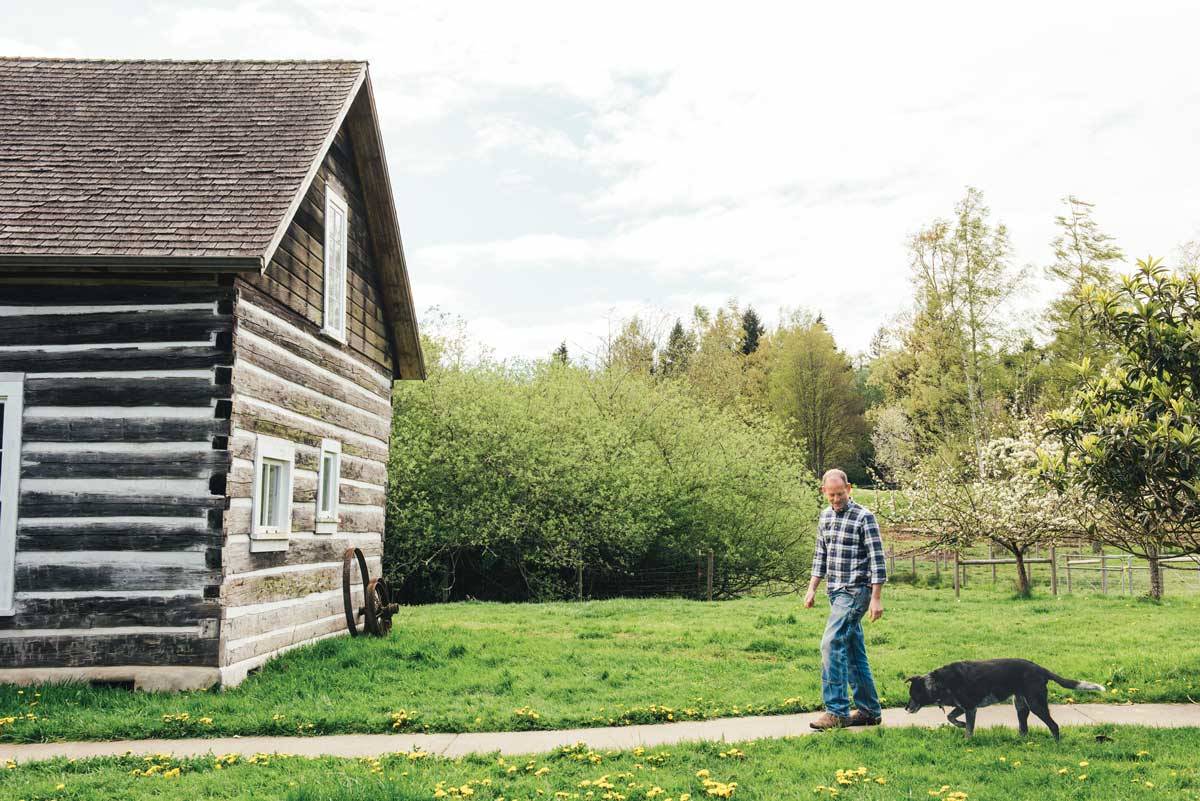
On the list of Plan B fantasies, opening a restaurant, writing a book, and becoming a farmer typically rank high. At the age of 24, Kurt Timmermeister had already checked off the chef box, and he’s since published two memoirs, but the dairyman had absolutely no agricultural ambitions when he purchased four acres on Washington State’s rural Vashon Island in 1991.
“I’m pretty sure I’d never even seen a cow close-up,” Timmermeister admits. At the time, he just wanted an affordable piece of land near his Café Septieme in Seattle, a short ferry ride away. The plot he bought was overrun with blackberry bushes and old cars; a crumbling 1880 log cabin threatened collapse; a chicken coop served as the main house. “I thought it was romantic,” Timmermeister says. “My friends were dismayed.”

His early and tentative forays into farming read like a series of comical city-boy-goes-to-the-country episodes, including failed attempts to chop wood, clueless visits to the John Deere dealership, and several disasters in beekeeping. “Today, people have YouTube to teach them such things; back then, I was going by books and a lot of trial and error,” says Timmermeister, who eventually chronicled his adventures in 2012’s Growing a Farmer. While living in the cold, moldy chicken quarters, he cleared the fields and restored the 1880 log cabin. “It took a decade because I kept running out of money, but now it’s amazingly beautiful.”
After 12 years as a weekend hobbyist with expansionist tendencies (Timmermeister acquired eight adjacent acres along the way), he sold his Seattle restaurant, providing a five-year financial cushion for his attempt at a full-time career in agriculture. Timmermeister started by growing vegetables – “a catastrophe, he says. “It hits you at the farmers market: I spent this much time on these carrots, and someone’s going to pay $3 for them. I can’t buy lunch for that!” The profit from his first season: $7,500. To stay afloat, the entrepreneur launched a series of Sunday-night dinners in the cookhouse he built on the property, charging guests a premium for food harvested a few yards away (this supper club served as the topic for his 2014 tome, Growing a Feast).
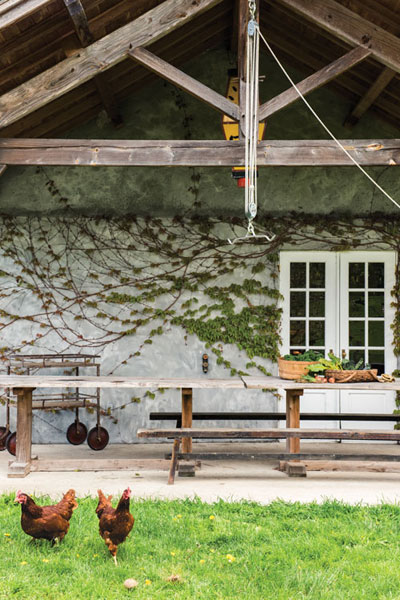
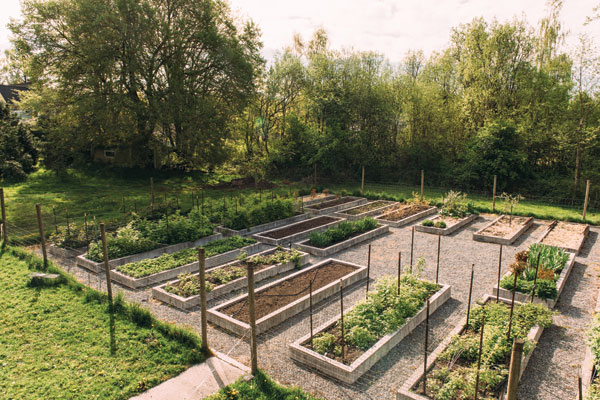
Then Timmermeister met Dinah, a 3-year-old Jersey cow, and his world turned upside down: “I remember when I went to pick her up, it was a definite sea change. Cow meant farmer.” He came to appreciate the ritual and responsibility of dairy farming, spending nearly two hours a day milking Dinah, until he finally invested in equipment. Fifteen dairy cows later – all Jerseys, which produce a high-butterfat milk – he decided to make cheese.
As with most of his projects, Timmermeister learned how to cut, shape, and age curds the hard way. Eventually, he developed a Camembert-like blend and named it in honor of his first love. “It took three years to become competent at crafting Dinah’s cheese, and I’m still occasionally stumped,” Timmermeister says. “Cheese is one of those remarkable products in which very few ingredients can produce vastly different results.” Nevertheless, he’s expanded his repertoire to encompass a crumbled feta-style cheese dubbed Flora, and LogHouse, an aged tomme-style cheese that celebrates the 19th-century cabin Timmermeister painstakingly renovated.
Despite an obvious bovine bias – “cows are big and important, they have personality” – Timmermeister’s business is based on coldly practical calculations. “I had been involved in restaurants and knew they would pay for a specialty cheese,” he explains. “I don’t make cheddar, I make French-style cheese.”
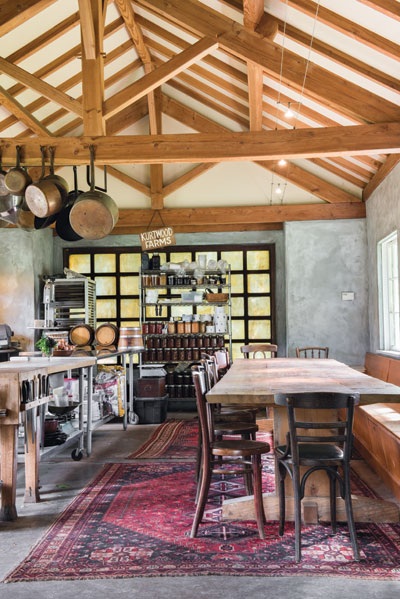
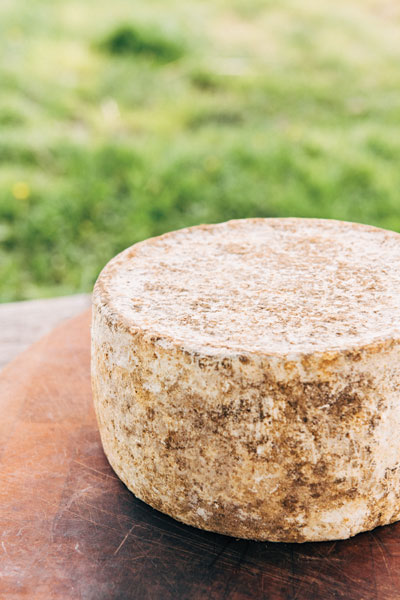
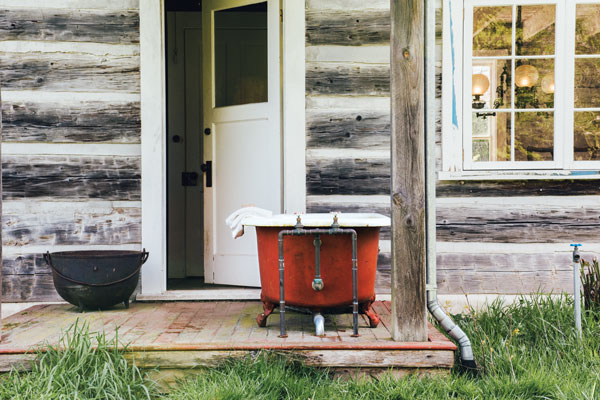
“Money drives almost everything,” he continues. “Every once in a while you would love to have your favorite cow live on the pasture for five more years, not making milk, but that just can’t happen.” Winters can be especially trying. “If it’s a really wet season, there’s a big part of the pasture that’s covered in mud and manure. It’s hard to not feel a sense of despair.”
This summer, however, things are looking up at Kurtwood Farms (Timmermeister added the “s” a few years in to make the small operation seem more substantial). Four or five employees will be on hand to help tend some 16 dairy cows, a few dozen chickens (whose eggs are used to make custard and ice cream), several pigs (farmed for meat), and 28 raised beds – allowing the proprietor to focus on Kurt Farm Shop, the retail outlet he opened in Seattle on May 1.
Not that Timmermeister has any desire to move back to the big city. He’s currently cultivating raspberries, blueberries, rhubarb, and a whole host of herbs for a new line of ice creams. “Trying out these incredible flavors – that’s what fascinates me at the moment,” he says. And when this accidental dairy farmer must take business calls? He often heads out to pasture, cell phone in hand, to talk amidst his cows. “I like that I’m connected to the land and to the animals and to the seasons. I’ve forgotten what it’s like not to live like that.”
[mf_image_grid_item src=”https://modernfarmer.com/wp-content/uploads/2015/08/kurtwood-farms-holly-jersey-calf.jpg” alt=”kurtwood farms holly jersey calf” title=””]Eight-week-old Holly, one of Timmermeister’s 16 Jersey cows, peers out from the Douglas fir barn, constructed in 2006.[/mf_image_grid_item]
[mf_image_grid_item src=”https://modernfarmer.com/wp-content/uploads/2015/08/kurtwood-farms-kurt-beehive.jpg” alt=”kurtwood farms beehives” title=””]A colorful paint job enlivens one of the farm’s three store-bought beehives, which house as many as 600,000 honey makers.[/mf_image_grid_item]
[mf_image_grid_item src=”https://modernfarmer.com/wp-content/uploads/2015/08/kurtwood-farms-eggs.jpg” alt=”kurtwood farms cookhouse” title=””]Pasture-raised Rhode Island Reds supply the eggs used in Kurt Farm Shop’s ice creams and custards.[/mf_image_grid_item]
[mf_image_grid_item src=”https://modernfarmer.com/wp-content/uploads/2015/08/kurtwood-farms-zebra-lamp.jpg” alt=”zebra leg lamp” title=””]In the log cabin’s living room, Timmermeister hung a painting by his mother above a vintage zebra-hoof lamp scored at auction 20 years ago. “I wouldn’t buy it today,” he admits.[/mf_image_grid_item]
[mf_image_grid_item src=”https://modernfarmer.com/wp-content/uploads/2015/08/kurtwood-farms-living-room-sofa1.jpg” alt=”kurtwood farms living room sofa” title=””]Timmermeister bought his well-loved living-room sofa in 1987 at Bushell’s Auction House in Seattle. “The dog sits on it more than I do,” he says.[/mf_image_grid_item]
[mf_image_grid_item src=”https://modernfarmer.com/wp-content/uploads/2015/08/kurtwood-farms-greenhouse1.jpg” alt=”kurtwood farms greenhouse” title=””]The glass greenhouse, assembled from a kit, gives Timmermeister a jump on the season.[/mf_image_grid_item]
[mf_image_grid_item src=”https://modernfarmer.com/wp-content/uploads/2015/08/kurtwood-farms-bedroom.jpg” title=””]All of the cabin’s paneling and doors are original. “I can stare at the patterns in the planks all night,” Timmermeister says.[/mf_image_grid_item]
[mf_image_grid_item src=”https://modernfarmer.com/wp-content/uploads/2015/08/kurtwood-farms-jeans-boots1.jpg” alt=”kurtwood farms jeans boots” title=””]A Windsor chair makes a fine storage spot for Timmermeister’s preferred Carhartt jeans with double-thick knees. He’s owned this pair of well-loved White’s packer boots for 6 years.[/mf_image_grid_item]
Follow us
This work is licensed under a Creative Commons Attribution-NoDerivatives 4.0 International License.
Want to republish a Modern Farmer story?
We are happy for Modern Farmer stories to be shared, and encourage you to republish our articles for your audience. When doing so, we ask that you follow these guidelines:
Please credit us and our writers
For the author byline, please use “Author Name, Modern Farmer.” At the top of our stories, if on the web, please include this text and link: “This story was originally published by Modern Farmer.”
Please make sure to include a link back to either our home page or the article URL.
At the bottom of the story, please include the following text:
“Modern Farmer is a nonprofit initiative dedicated to raising awareness and catalyzing action at the intersection of food, agriculture, and society. Read more at <link>Modern Farmer</link>.”
Use our widget
We’d like to be able to track our stories, so we ask that if you republish our content, you do so using our widget (located on the left hand side of the article). The HTML code has a built-in tracker that tells us the data and domain where the story was published, as well as view counts.
Check the image requirements
It’s your responsibility to confirm you're licensed to republish images in our articles. Some images, such as those from commercial providers, don't allow their images to be republished without permission or payment. Copyright terms are generally listed in the image caption and attribution. You are welcome to omit our images or substitute with your own. Charts and interactive graphics follow the same rules.
Don’t change too much. Or, ask us first.
Articles must be republished in their entirety. It’s okay to change references to time (“today” to “yesterday”) or location (“Iowa City, IA” to “here”). But please keep everything else the same.
If you feel strongly that a more material edit needs to be made, get in touch with us at [email protected]. We’re happy to discuss it with the original author, but we must have prior approval for changes before publication.
Special cases
Extracts. You may run the first few lines or paragraphs of the article and then say: “Read the full article at Modern Farmer” with a link back to the original article.
Quotes. You may quote authors provided you include a link back to the article URL.
Translations. These require writer approval. To inquire about translation of a Modern Farmer article, contact us at [email protected]
Signed consent / copyright release forms. These are not required, provided you are following these guidelines.
Print. Articles can be republished in print under these same rules, with the exception that you do not need to include the links.
Tag us
When sharing the story on social media, please tag us using the following: - Twitter (@ModFarm) - Facebook (@ModernFarmerMedia) - Instagram (@modfarm)
Use our content respectfully
Modern Farmer is a nonprofit and as such we share our content for free and in good faith in order to reach new audiences. Respectfully,
No selling ads against our stories. It’s okay to put our stories on pages with ads.
Don’t republish our material wholesale, or automatically; you need to select stories to be republished individually.
You have no rights to sell, license, syndicate, or otherwise represent yourself as the authorized owner of our material to any third parties. This means that you cannot actively publish or submit our work for syndication to third party platforms or apps like Apple News or Google News. We understand that publishers cannot fully control when certain third parties automatically summarize or crawl content from publishers’ own sites.
Keep in touch
We want to hear from you if you love Modern Farmer content, have a collaboration idea, or anything else to share. As a nonprofit outlet, we work in service of our community and are always open to comments, feedback, and ideas. Contact us at [email protected].by Miranda Silva, Modern Farmer
August 12, 2015
Modern Farmer Weekly
Solutions Hub
Innovations, ideas and inspiration. Actionable solutions for a resilient food system.
ExploreExplore other topics
Share With Us
We want to hear from Modern Farmer readers who have thoughtful commentary, actionable solutions, or helpful ideas to share.
SubmitNecessary cookies are absolutely essential for the website to function properly. This category only includes cookies that ensures basic functionalities and security features of the website. These cookies do not store any personal information.
Any cookies that may not be particularly necessary for the website to function and are used specifically to collect user personal data via analytics, ads, other embedded contents are termed as non-necessary cookies.